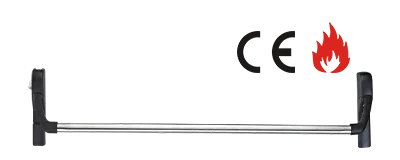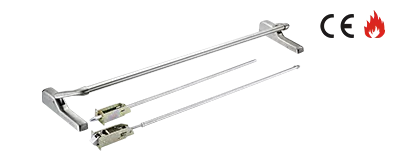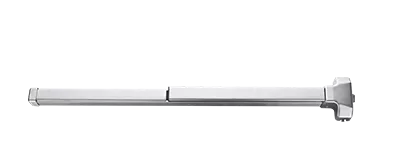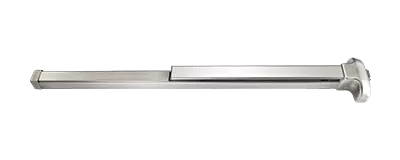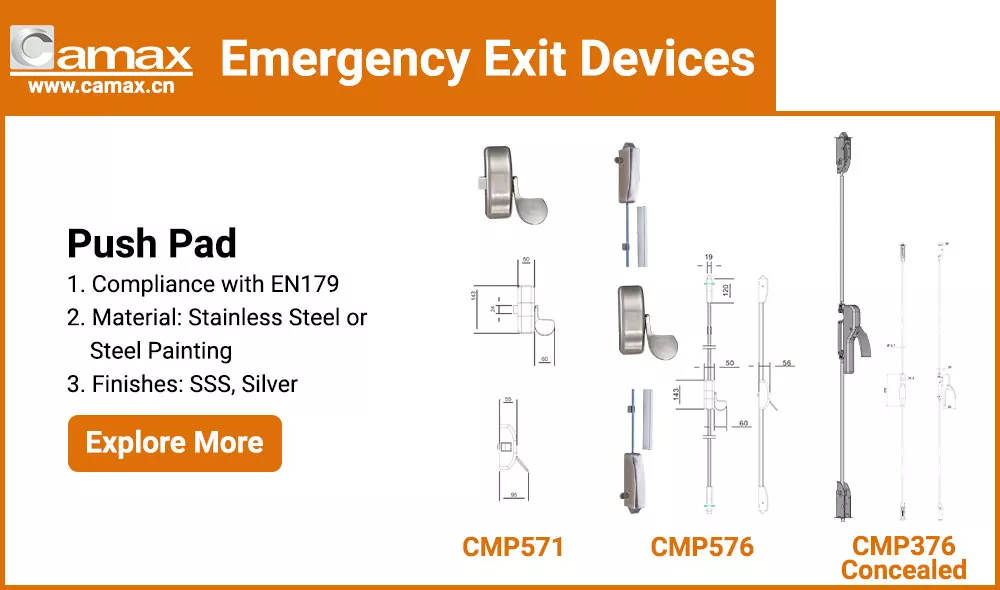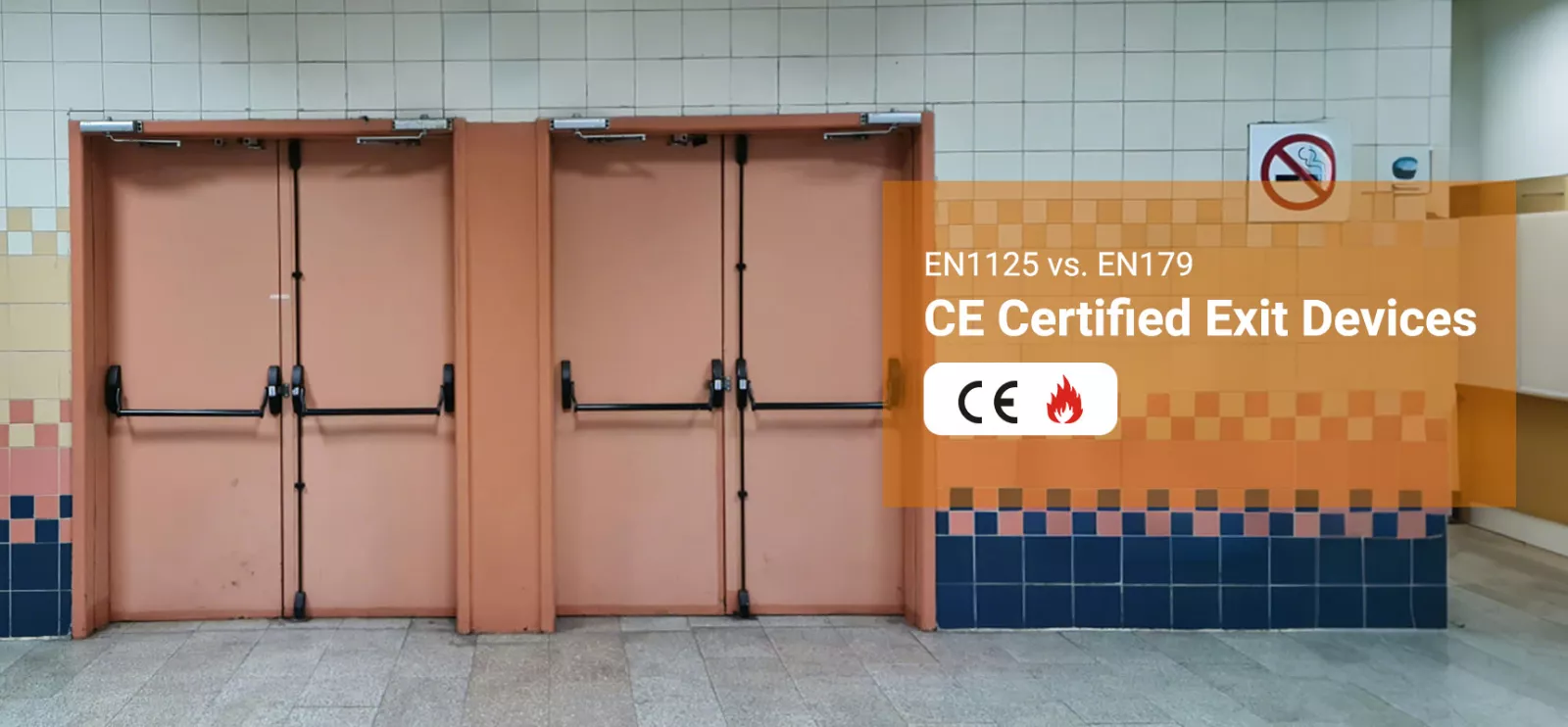
In any building, the importance of safe and effective exit routes cannot be overstated. When emergencies strike, whether it's a fire, natural disaster, or other unforeseen event, the ability for occupants to evacuate quickly and safely is paramount. This is where exit devices play a critical role, acting as the silent guardians of our safety. However, not all exit devices are created equal, especially when it comes to the stringent requirements set by European standards.
Every emergency exit device and panic exit device installed in European buildings must comply with specific standards to receive CE marking. The CE marking isn't just a formality – it's a guarantee that the device has been tested and meets the rigorous safety requirements set by European legislation. Two of the most important standards governing these devices are EN1125 and EN179. These standards ensure that exit devices function reliably in emergencies, preventing them from getting in the way or failing when people need them most.
Table of contents
What is EN1125?
The EN1125 standard governs panic exit devices specifically designed for environments where unfamiliar people may need to evacuate quickly. We can think of busy shopping centers during holiday sales, packed theaters during evening shows, or sports stadiums filled with thousands of spectators. In these high-stress, high-traffic situations, people may not be familiar with the building layout and could easily panic during an emergency.
1. Key Requirements of EN1125 Devices
What makes a panic exit device with CE certification compliant with EN1125? Several critical requirements ensure these devices can handle mass evacuations effectively:
Operable by Anyone: The fundamental principle of EN1125 panic exit devices is that they must be operable by anyone, regardless of their familiarity with the building or the device itself. This means no special knowledge or excessive force should be required.
Intuitive Operation: A defining feature of EN1125 panic exit devices is the horizontal bar or push bar that crosses the width of the door. This design allows for fast and instinctive egress, even in low light or smoky conditions. With just a light push anywhere on the bar, the door unlocks and opens right away.
Built to Last: Designed for high-traffic areas and emergencies, EN1125 devices are made to be exceptionally strong and durable—able to handle heavy use and significant force without compromising performance.
Note: What is fire exit devices?
For fire exit devices specifically, the combination of EN1125 and EN1634-1 standards should be considered. EN1634-1 covers the fire resistance performance of door assemblies, ensuring that exit devices maintain their integrity during fire conditions.
What is EN179?
While EN1125 focuses on panic situations with unfamiliar users, EN179 addresses emergency exit devices used in buildings where the occupants are typically familiar with the premises and its layout. These might include office buildings where employees work daily, staff areas within hospitals, or storage rooms accessed by trained personnel.
1. Key Requirements of EN179 Devices
Designed for Familiar Users: EN179 exit devices are specifically designed for access-controlled buildings where people are trained or inherently know the layout and how to operate the door hardware.
Simple Operation: These devices often involve a lever handle or a push pad that opens the door with minimal effort. The operation is straightforward but may require a more deliberate action than an EN1125 device.
No Special Tools: Like their EN1125 counterparts, EN179 devices do not require special tools to operate, ensuring quick egress in an emergency. However, the operation method may involve a more deliberate action, such as pressing a specific area of a push pad or operating a lever handle, rather than simply pushing against a horizontal bar.
| Feature | EN1125 (Panic Exit Device) | EN179 (Emergency Exit Device) |
|---|---|---|
| Operation Method | Horizontal push bar across door width | Lever handle or push pad |
| User Familiarity | Unfamiliar users or panic situations | Familiar users (staff, employees) |
| Occupancy Level | Higher occupancy, public access | Lower occupancy, controlled access |
| Application Environment | Shopping centers, theaters, stadiums | Offices, staff areas, controlled spaces |
| Force Required | Minimal force, intuitive push action | Minimal force, deliberate operation |
| Aesthetic Considerations | More prominent, clearly visible design | Blends with standard door hardware |
Where to Buy EN1125 and EN179 Compliant Exit Devices
When it comes to sourcing reliable CE-certified exit devices, choosing a manufacturer with proven expertise in European standards is essential. Camax Hardware specializes in manufacturing both EN1125 and EN179 compliant exit devices, offering comprehensive solutions for various building types and safety requirements.
All Camax Hardware exit devices undergo rigorous testing to ensure compliance with European standards and receive proper CE marking. Our commitment to quality ensures that every panic bar with CE certification will perform reliably when lives depend on it.
1. Camax Hardware's EN1125 Panic Exit Devices
Our EN1125 compliant devices are specifically engineered for high-traffic public buildings where rapid evacuation is critical. These panic exit devices are ideal for:
Theaters and entertainment venues where large crowds gather
Educational institutions including schools and universities
Shopping malls and retail centers with high foot traffic
Sports stadiums and arenas with massive occupancy
Convention centers and exhibition halls
- • Narrow Stile Crossbar Exit Device
- • Handed
- • Certificate: EN1125, categoery 3; EN1634-1, 2-hour fire rated
- • Material: Stainless steel, Steel, Plastic
- • Finish: Stainless steel satin, Silver painted, Polishing, PVD, Black, Red
- • Concealed panic exit device
- • Non-handed
- • Certificate: EN1125; EN1634-1, fire-rated
- • Material: Stainless steel, Steel, Plastic
- • Finish: Stainless steel satin, Silver painted, Polishing, PVD, Black, Red
- • Compliance: ANSI/BHMA A156.3, grade 1; UL10C, fire-rated; EN1125; EN1634-1, fire-rated
- • Pullman latch, lateral latch modular design
- • Non-handed
- • Material: Stainless steel, Steel
- • Finish: Stainless steel satin, Silver painted, Polishing, PVD, Black, Red
- • Compliance: EN1125; EN1634-1
- • Suitable for narrow stile door
- • Non-handed
- • Material: Stainless steel, Steel
- • Finish: Stainless steel satin, Silver painted, Polishing, PVD, Black, Red
2. Camax Hardware's EN179 Emergency Exit Devices
Our EN179 compliant devices provide the perfect balance of security and emergency accessibility for controlled environments. These emergency exit devices are particularly suitable for:
Office buildings and corporate environments
Staff areas within hospitals and healthcare facilities
Storage rooms and warehouse facilities
Industrial facilities with controlled access
Government buildings requiring enhanced security
Frequently Asked Questions about CE-Certified Exit Devices
Q1. Can EN179 and EN1125 devices be mixed on the same door?
Generally, no. Each door should be equipped with exit devices that follow a single, appropriate standard. Mixing different standards on the same door can confuse an emergency and might not meet code requirements. The decision between EN179 and EN1125 should depend on where the door is located, who will be using it, and how it fits into the building’s overall safety strategy.
Q2. How do I determine if my door needs an EN179 or EN1125 device?
When choosing an exit device, you should consider some key factors, like how familiar people are with the building, how many occupants there are, and whether panic could be a concern during an emergency. Use EN1125 in public areas where people may not know the layout, such as shops, schools, or theaters. For staff-only or controlled spaces, like office buildings or back-of-house areas, EN179 is usually the better fit. If you’re unsure which one to choose, feel free to reach out to Camax—we’re happy to help.
Q3. Are CE-marked panic bars required by law in all European buildings?
Yes, all emergency exit devices and panic exit devices installed in European buildings must carry CE marking to demonstrate compliance with applicable European standards. This includes compliance with either EN1125 or EN179 depending on the application. Building owners and managers are legally responsible for ensuring all exit devices meet these requirements.
Q4. How often should exit devices be tested and maintained?
Regular testing and maintenance are crucial for ensuring CE-certified exit devices function properly during emergencies. Most manufacturers recommend monthly visual inspections, quarterly operational tests, and annual professional maintenance. The specific maintenance schedule may vary based on usage levels, environmental conditions, and local regulations. Always follow the manufacturer's guidelines and local building codes.
Contact Camax Hardware to Explore More CE-Certified Exit Devices
Understanding the differences between EN1125 and EN179 standards is essential for making the right choice for your building’s safety system. Both standards ensure that CE-certified exit devices function reliably during emergencies. EN1125 panic exit devices are designed for high-traffic public areas where unfamiliar users may need to evacuate quickly during panic situations. EN179 emergency exit devices are better suited for controlled environments with familiar users, such as office buildings, staff areas, and storage facilities.
Don't compromise on safety. Whether you need EN1125 or EN179 compliant devices, Camax Hardware has the expertise and products to meet your building's specific requirements. Our European standard compliant panic bars are rigorously tested and certified to provide reliable performance when it matters most.
Contact Camax Hardware today to ensure compliance with your local building codes and European safety standards.
Need help? Contact Camax for a quote!
Discover Camax's door & window hardware with ANSI/BHMA/UL/CE certification today!


